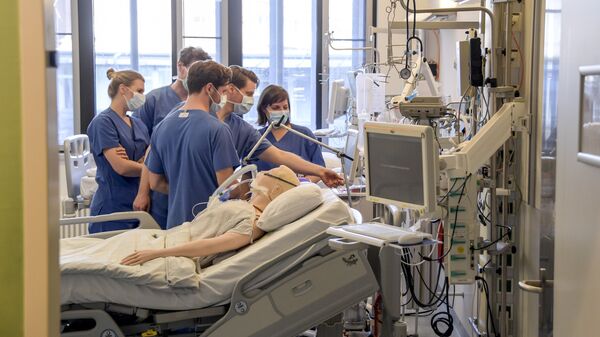The study, which involved 10,021 patients treated in 920 German hospitals between February 26 and April 19, found that the mortality rate among COVID-19 patients who were placed on ventilators during that time period was 53%. The mortality rate was 16% for patients who did not receive ventilation. The study’s data was analyzed by the German Interdisciplinary Association of Critical Care and Emergency Medicine, the Technical University (TU) of Berlin and WIdO, which is the research institute of AOK, a German health insurance company.
The analysis also found that the mortality rate among hospitalized men was 25%, compared to 19% among women. The mortality rate was higher among older patients regardless of their gender: 27% of patients between the ages of 70 and 79 died, and 38% percent of patients over the age of 80 died.
“These high mortality rates clearly show that a relatively high number of patients with a very serious course of disease were treated in hospitals. Such serious course of diseases mainly affect older people and people whose health is already compromised, but also occur in younger patients,” Jürgen Klauber, director of WIdO, said in a Wednesday news release.
The study also found that ventilated patients were more likely to suffer from comorbidities.
“COVID-19 patients treated in hospitals often suffer from a range of comorbidities. The number of patients with comorbidities was considerably higher among those who received ventilation than among those who did not. For example, 24% of patients not receiving ventilation had cardiac arrhythmias as opposed to 43% among those who did receive ventilation. Diabetes was present in 26% of patients without ventilation but in 39% for ventilated patients,” the news release explained.
Overall, patients in the study stayed in hospitals for an average of 14 days. However, those who were not ventilated were hospitalized for an average of 12 days, while patients who required ventilation had an average stay of 25 days.
The study’s data on the length and frequency of ventilation will allow hospitals to be ready for future patients, researchers said.
“Our analyses provide useful data for forecasts regarding hospital and ventilation capacities. We observe that on average 240 days of ventilation are required for every 100 hospitalized patients. These are important numbers to prepare for a second wave of the pandemic. However, we do not anticipate any problems with normal hospital beds, even with high infection rates,” said Reinhard Busse, professor of health care management at TU Berlin, according to the news release.



